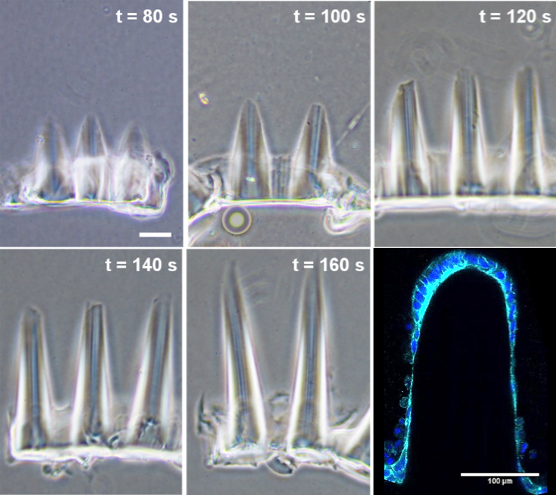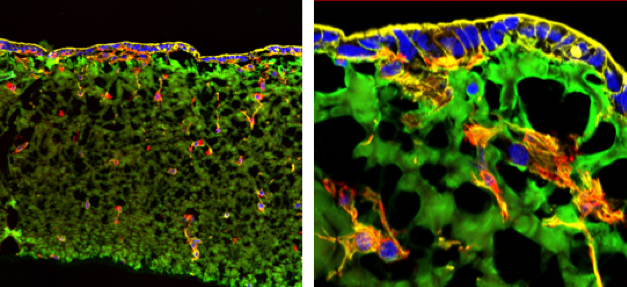Group: Mechanics of development and disease and Biomimetic systems for cell engineering
Group leader: Vito Conte (vconte@ibecbarcelona.eu) and Elena Martinez (emartinez@ibecbarcelona.eu)
Research project

Epithelia play an instrumental role in the genesis and function of organs by separating and protecting stromal tissue domains from luminal domains. As in embryo development, epithelia acquire function by shaping into complex three-dimensional (3D) architectures via morphogenetic processes such as invagination and evagination (Front. Bioeng. Biotechnol. 2018, 6, 197; Nat. Commun. 2017, 8, 1594). These processes evolve under the mediation of cell and tissue mechanics as cells must generate and sustain forces throughout the epithelium to create in cysts, tubules or more complex morphologies observed in intestinal villi and crypts. The extent to which epithelia must bend to perform their physiological function is strongly dependent on specific organ. In that respect, we still ignore to a considerable extent how genetic information at the molecular level (genotype) is integrated into curved epithelial shapes at the tissue level (phenotype) via the mediation of cellular and tissue mechanics (mechanotype). In this project between the groups of Dr Vito Conte and Elena Martinez we propose to study this relationship in the context of colorectal in vitro models (cell lines, organoids and stroma-epithelium cocultures) both in physiological and pathological conditions – epithelial curvature has been recently linked to the progression of a class of tumours including the colorectal carcinoma (Nat. Cell Biol. 2018, 20, 3, 296–306) and the pancreatic carcinoma (Nature 2019, 566, 126–130).

The Martinez group combines engineering microfabrication technologies and stem cell research to create 3D cell culture microenvironments and tissue engineering constructs.
The Conte group investigates the mechanobiology of pathological development and disease progression with a specific focus on soft tissue morphogenesis – the process by which a tissue takes or lose shape.
Job position
The successful candidate will mimic the complex architecture of colorectal epithelia by growing in vitro models on 3D hydrogel scaffolds having different shapes and curvatures, which will be built through light-based bioprinting techniques applied to photopolymerizable polymers (Biofabrication 2019, 11, 2, 025007). Scaffold curvature and its mechanical properties will be tuned by changing the fabrication parameters (e.g. exposure dose, photo-initiator, light spectrum) and the pre-polymer characteristics (concentration, functionalisation, molecular weight). Deciphering the relationship between genotype, mechanotype and phenotype for 3D colorectal models in both physiological and pathological conditions will open a path towards the determination of the role of stroma curvature in the progression of colorectal cancer disease.

